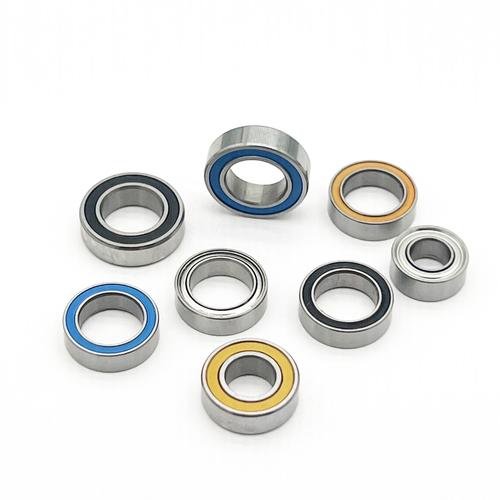Top Industrial Applications of Ball Bearings: Key Uses and Benefits
Ball bearings are precision components designed to reduce friction and support rotational or linear motion in machinery. Their durability and efficiency make them indispensable across industries like automotive, aerospace, manufacturing, and energy systems. This article explores critical industrial applications where ball bearings ensure optimal performance.
1、ball bearings in automotive industry2、aerospace applications of ball bearings
3、ball bearings in manufacturing equipment
4、medical devices using ball bearings
5、ball bearings in wind turbines
1、ball bearings in automotive industry

Ball bearings play a pivotal role in automotive systems, enabling smooth operation of wheels, transmissions, and engines. In wheel hubs, tapered roller bearings handle radial and axial loads while minimizing heat generation. Transmission systems rely on precision angular contact bearings to manage gear shifts efficiently. Turbochargers use high-temperature-resistant ceramic hybrid bearings to sustain RPMs exceeding 200,000. Electric vehicles demand ultra-low-friction bearings to extend battery range. Leading manufacturers like SKF and NTN develop specialized automotive bearings with advanced seals to prevent contamination in harsh environments.
2、aerospace applications of ball bearings
Aerospace engineering requires bearings capable of withstanding extreme temperatures and vacuum conditions. Jet engines utilize nickel-alloy bearings with solid lubricants for turbine shaft support. Flight control systems depend on miniature stainless steel bearings for actuator precision. Satellite reaction wheels employ magnetic bearings to achieve frictionless rotation in orbit. Strict ISO 26602 standards govern aerospace bearing manufacturing to ensure zero failure tolerance. Innovations like self-lubricating coatings and hybrid ceramic-steel designs are revolutionizing space exploration equipment reliability.
3、ball bearings in manufacturing equipment
Industrial machinery leverages ball bearings to maintain production line efficiency. CNC machines use P4-grade precision bearings for spindle accuracy within 2μm. Robotic arms integrate thin-section bearings for compact joint movements. Conveyor systems employ large-diameter roller bearings to handle heavy payloads. Food processing equipment utilizes corrosion-resistant 440C stainless steel bearings meeting FDA standards. Predictive maintenance technologies now monitor bearing vibration patterns to prevent unscheduled downtime in smart factories.
4、medical devices using ball bearings
Medical technology demands ultra-clean and precise bearing solutions. MRI machines incorporate non-magnetic zirconia bearings to avoid image distortion. Surgical robots use sterilizable ceramic bearings for seamless articulation. Dental handpieces require miniature bearings capable of 400,000 RPM operation. Implantable devices like insulin pumps utilize biocompatible PEEK polymer bearings. Stringent ISO 13485 certification ensures medical bearings meet critical safety protocols for patient care applications.
5、ball bearings in wind turbines
Wind energy systems depend on robust bearing configurations to endure variable loads. Main shaft designs combine spherical roller bearings and cylindrical thrust bearings for multidirectional force management. Pitch control systems use slewing rings to adjust blade angles dynamically. Offshore turbines require super-sized bearings with seawater-resistant coatings. Condition monitoring systems track lubrication effectiveness and wear patterns to optimize maintenance cycles. Innovations like integrated sensor bearings are enhancing predictive analytics in renewable energy infrastructure.
From high-speed vehicles to life-saving medical tools, ball bearings prove indispensable across industries. This guide has examined five critical sectors where precision bearings drive technological advancement. Whether optimizing electric vehicle efficiency or enabling space exploration, understanding these applications helps engineers select optimal bearing solutions. Continue reading to discover technical specifications, maintenance best practices, and innovation trends shaping future industrial applications.
This comprehensive analysis demonstrates how ball bearings serve as fundamental components in modern industry. Their adaptability across automotive, aerospace, medical, and renewable energy sectors underscores their engineering significance. As technology evolves, advanced materials and smart bearing systems will continue pushing performance boundaries in global industrial applications.




 13869596835
13869596835